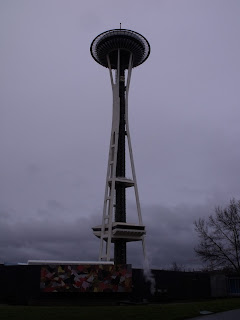In honor of Black History Month, I thought I would write a couple of things about some Civil Rights sites I have visited.
The first entry will be about the Selma to Montgomery March. In March 1964, African-Americans were fighting for the right to vote. The first march, on March 7, went from downtown Selma to the Edmund Pettus Bridge where the marchers were stopped by tear gas and policemen. The second march, on March 9, was a symbolic one led by Martin Luther King, Jr. The final march began on March 21 and ended on March 25. The group walked 52 miles from Selma to downtown Montgomery. This helped bring about the Voting Rights Act of 1965
The day that we visited happened to be a voting day, which made the visit even more special. The buildings are still used as public building, so there are not tours that I know of. There are brochures at the Selma Library with the significant sites of the town. Here are some pictures of the sights in Selma and along U.S. 80.
Bethel A.M.E. Church was where all three marches began. It is right beside one of the now major voting precincts. Services are still held here.
Dallas County Courthouse. The marchers would stop here to let their concerns be known. It was the voter registration office in the 1960s.
The Edmund Pettus Bridge is the only way out towards Montgomery. The first march was stopped here by police.
These three signs mark where the marches would camp each night. They would cover about 12 miles per day. The signs are along U.S. 80. It is very moving to see how fast you can cover these places in a car while these people walked the whole way.
The Alabama State House in Montgomery. This was the final destination of the marchers. They reached it after 5 days.
The first entry will be about the Selma to Montgomery March. In March 1964, African-Americans were fighting for the right to vote. The first march, on March 7, went from downtown Selma to the Edmund Pettus Bridge where the marchers were stopped by tear gas and policemen. The second march, on March 9, was a symbolic one led by Martin Luther King, Jr. The final march began on March 21 and ended on March 25. The group walked 52 miles from Selma to downtown Montgomery. This helped bring about the Voting Rights Act of 1965
The day that we visited happened to be a voting day, which made the visit even more special. The buildings are still used as public building, so there are not tours that I know of. There are brochures at the Selma Library with the significant sites of the town. Here are some pictures of the sights in Selma and along U.S. 80.
Bethel A.M.E. Church was where all three marches began. It is right beside one of the now major voting precincts. Services are still held here.
Dallas County Courthouse. The marchers would stop here to let their concerns be known. It was the voter registration office in the 1960s.
The Edmund Pettus Bridge is the only way out towards Montgomery. The first march was stopped here by police.
These three signs mark where the marches would camp each night. They would cover about 12 miles per day. The signs are along U.S. 80. It is very moving to see how fast you can cover these places in a car while these people walked the whole way.
The Alabama State House in Montgomery. This was the final destination of the marchers. They reached it after 5 days.











